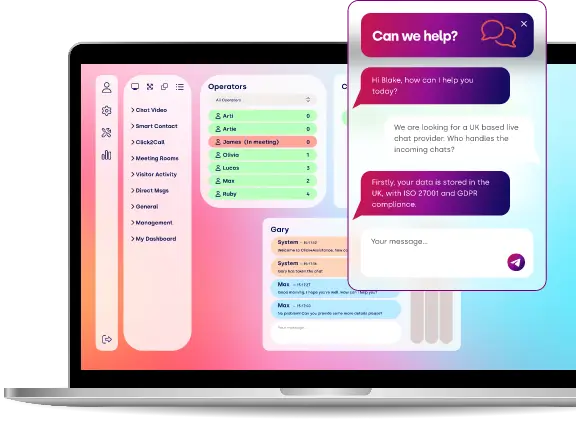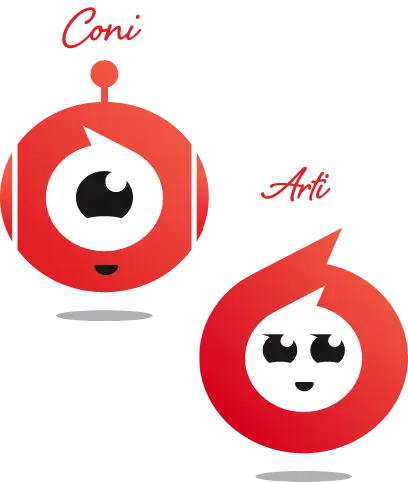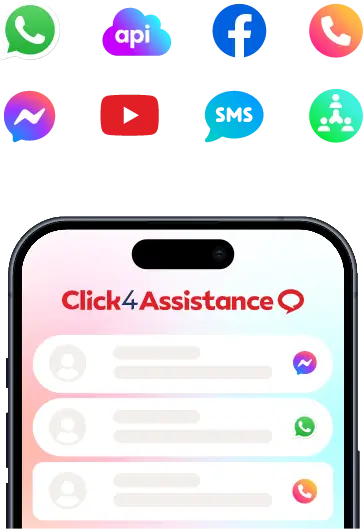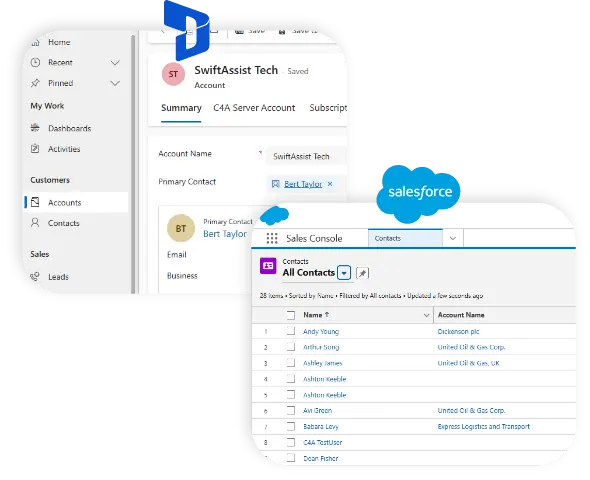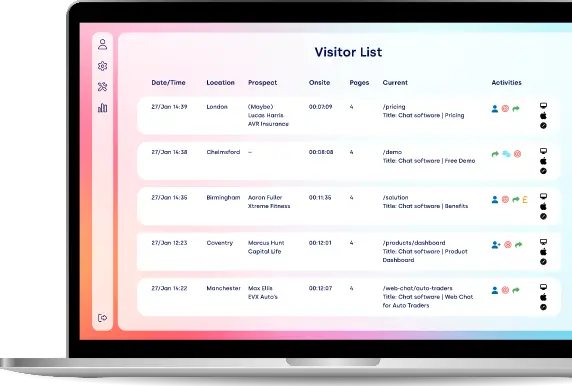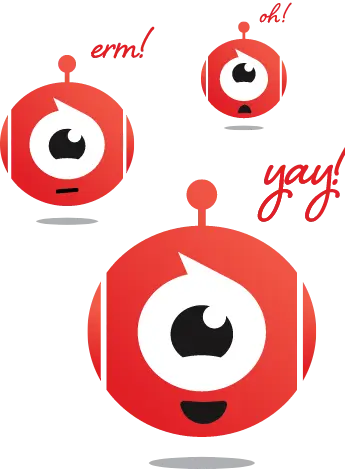
HOW TO BUILD A COMPREHENSIVE CHATBOT IN 2024:
AN ULTIMATE GUIDE
Take modern, online customer service. Have you noticed how chatbots aren’t a trend – they’re your best new buddy in businesses? In this digital age, more and more businesses are using chatbots to connect with customers and improve the user experience. Chatbots are not just tools; they’re like superheroes standing right next to you, helping your business run smoothly or even actually powering the whole show when it comes to engaging with your audience and enriching their experience.
Join us on an exciting journey into the heart of chatbot development. Together we shall explore why chatbots are even more important – they’re critical players in the success of your business. We will walk you through the creation process step-by-step, sharing some of the best practices that make a real difference, and highlighting future predictions. Along the way, we will weave into some real-life stories that call attention to the human side of these AI conversational agents.
Get ready for an exhilarating adventure, where technology and humanity seamlessly interacts, building meaningful relationships and reshaping the way you connect with your audience. Welcome to a more personalised and humane approach to customer service!
The Importance of Chatbots in the Context of Websites
Imagine a world where your website operates like a store, open for business 24 hours a day. It welcomes visitors with a knowledgeable and helpful assistant who is eager to assist, deal with customer enquiries and even lend a hand with purchases. This is the realm of [chatbots], where it’s not just office hours or human representatives who interact with customers. Chatbots have easily proven their effectiveness with improved response times and better issue handling, all while providing a user-friendly experience. Chatbots free up humans to engage with complex tasks, and easily automate simple enquiries.
These chatbots are not just effective tools; Online communication is redefined through a blend of activity, efficiency and personality. They make sure the doors of your virtual business are always wide open, and invite potential visitors to apply at their convenience. In doing so, chatbots not only elevate the user experience, but also empower humans to focus more on complex tasks, allowing them to answer frequently asked questions that can easily be handled through automation.
What industries are keen to use a chatbot and why?
Isn’t it intriguing to see how various industries are moving towards a conversational marketing chatbot for their websites? However, the real question, though, is why are they doing this? Well, the answer to this is quite logical, and the most important benefits associated with using chatbots:
- Always available: Imagine having chatbots available every day of the year, saving businesses money on hiring outside help during peak times. For E-commerce businesses, this provides an opportunity to reach out to a larger and wider audience to provide support.
- Healthcare Efficiency: Increasing demand for healthcare services has caused the adoption of chatbots to automate approaches like patient referrals. Imagine a completely automated agent that can effortlessly process medical records, schedule appointments and handle requests for medication.
- Global Reach in Travel: Providing superior customer service is a top priority in the travel world, making it ideally suited for chatbots personal touch. Use of chatbots can be ensured that every customer has had a consistent and professional experience. This not only speeds up production processes but also improves the overall customer journey, both before and during an adventurous trip or holiday.
- Continuous Support in Finance: For the realm of finance, chatbots and conversational AI are emerging as increasingly valuable assets for the industry. These organisations are committed to providing round-the-clock service, where chatbots can provide reliable information to customers in line with financial regulations, this not only ensures the accuracy of the answers but also plays an important role in the spread of misinformation.
Let’s not overlook the exciting developments that are happening in the live chat industry, especially ChatGPT, developments worth paying attention to. Even in its early stages, ChatGPT has been described as “scary good” by OpenAI co-founder Elon Musk. It’s approaching a level of sophistication that some would consider “dangerously” close to strong AI, watch out for this incredible breakthrough that has made incredible progress in conversation technology development!
Steps on how to make a Chatbot
1. Determine your Purpose and Goals
Before entirely the coding field or choosing a platform, it’s important to consider the role of your chatbot. Will it be a friendly customer service partner, a lead generation specialist, or a source of product recommendations? Clarifying its objectives will be the guiding compass for the entire decision-making process, from design to implementation.
2. Choosing the appropriate Chatbot Platform or Technology
In today’s diverse landscape, there are many chatbot platforms available today. Each platform offers unique features, pricing structures, and learning curves. Choose a platform that matches your goals and your team's technical expertise. If you are starting from scratch, explore the wide open-source libraries and tools for a customisable approach.
3. Design the Conversation Flow
The essence of an outstanding chatbot resides in a conversational flow that is both intuitive and reminiscent of human interaction. This allows you to envisage all possible ways users may interact, building dialogue paths for various scenarios and using powerful involvement strategies to attract and teach users in an expert way.

4. Implement Chatbot Functionality
Now that the planning phase has been completed and you’re now armed with a well-thought-out plan, it’s time to breathe life into your chatbot. This involves flawlessly integrating with backend systems, creating conversational scripts and ensuring a smooth transition to human agents whenever things become complex.
5. Test and Refine the Chatbot
Testing plays an important role in ensuring that your chatbot performs well in the digital world. The feedback serves as a guiding light, providing incremental improvements that allow the chatbot to improve over time. It’s a trend that is constantly growing, resulting in a chatbot that adapts to every interaction and gets even smarter.
Guidelines for Effective Chatbot Development
Building a high-performance chatbot goes beyond just writing code – it’s about fashioning an engaging experience that truly connects with users. Here are some key strategies for chatbots that certainly make a difference:
- Clear and Concise Communication: Speak the language of your audience. Use clear, concise language that resonates with your target audience and ensure smooth and meaningful communication.
- Personalisation: Handle user data with care and transparency. Tailor interactions to individual preferences, creating a sense of connection and meaning.
- Seamless integration: Enhance the overall user experience by seamlessly integrating chatbots into your website and other digital platforms. Ensure a coherent flow that matches with the user’s journey across different touchpoints.
- Continuous Improvement: Embrace continuous enhancements through comprehensive data analysis, customer feedback and changes in the market trends. Optimise and evolve your chatbot to keep it relevant and meet the user’s expectations at all times.
By incorporating these strategies, your chatbot can go beyond mere functionality, and become a valuable and engaging asset that will truly connect with your audience.
Anticipated Developments in Chatbot Evolution for 2024
The chatbot landscape is changing rapidly, and 2024 will mark the beginning of a major boom. Get ready exciting times ahead! Here is a sneak peek at what’s possible in future chatbot development:
- Advancements in Natural Language Processing (NLP): Get ready for chatbots honing their ability to understand and process human language. These changes will create more accurate but also contextual interactions.
- Integration with Voice Assistants: Verify that chatbots and voice assistant can integrate seamlessly by creating different user experiences. Users can switch between spoken and written conversations effortlessly, breaking communication barriers.
- Enhanced Customer Experience: Fuelled by AI and machine learning, chatbots are poised to deliver highly personalised experiences. They will anticipate user preferences, and offer proactive assistance, revolutionising the standards for customer service. Get ready for a whole new level of engagement and satisfaction!
Exploring Successful Chatbot Implementations
Analysing successful chatbot projects can provide valuable insights and exploration for your project. Here are a few examples of the benefits of chatbots in different industries:
- In the healthcare sector, chatbots have helpful in streamlining tasks by helping to schedule appointments, send medication reminders and provide preliminary assessments, so this not only improves the quality of healthcare systems but also improves patient outcomes.
- Retailers in the eCommerce industry have integrated chatbots to assist customers throughout their shopping journey, providing personalised recommendations and better handling post-purchase support. This improves the overall shopping experience and increases the level of customer service support.
- Chatbots have also been adopted by the financial industry to provide 24/7 support for banking services, handle customer enquiries and provide financial advice. These strategic chatbots will provide better accessibility and contribute to higher levels of customer satisfaction.
- The travel and tourism industry, chatbots have been developed to work as travel assistants by working with customers on flight and hotel searches, offering relevant travel options and introducing packages and experiences based on customer travel patterns. These chatbots create an enhanced user experience and as a result, tourism verticals can use chatbots to generate leads.
Conclusion
Embarking on the journey of making a chatbot for your website represents a great way to move towards improving customer service, increasing operational efficiency, and gaining a competitive edge in the market. By gaining a deep understanding of your audience, embracing suitable technology, and adhering to the best practices, you have the ability to develop and build a chatbot that not only serves its useful purpose but also deeply resonates with your users.
Creating a chatbot can seem very overwhelming at first, but with careful planning and the proper approach, it can certainly become an exciting opportunity to set yourself apart in the online world. As technology continues to evolve, chatbots are becoming increasingly more important for customer interaction, making them a valuable investment for businesses. By utilising them, businesses can experience enhanced customer satisfaction and more efficient operational processes.
If you are ready to breathe life into your chatbot and elevate your online customer experience, do not hesitate to reach out to us today! Let us embark on this groundbreaking journey together.
Frequently Asked Questions (FAQs)
We understand that delving into all of this information might leave you with some lingering questions. Don’t worry, below is a list of common enquiries that often come up. However, if yours is not on the list, no worries! Feel free to reach out to our friendly and approachable support team. You can give us a call on 01268 280826 or drop us an email at support@click4assistance.co.uk. We’re always here to assist you!
How many bots can I create?
There are no restrictions on the number of bots you can create and configure. However, the number of licences will dictate how many forms a bot can be assigned against.
How many steps can I have?
You have the flexibility to create an unlimited number of steps. It’s a good practice to maintain a tidy layout for complex chatbots, making future changes smoother and steps easier to locate.
What’s the difference between adding to a Pre-Chat or Offline form?
A Pre-Chat form will only appear when the experience is available, indicating that an operator is logged-in and ready to handle any incoming chats. On the other hand, an Offline form appears when the experience is unavailable, ensuring you can’t hand off or escalate to a human.
How do I get an email of the conversation that took place?
In the General Settings area against a final step, make sure that you’ve entered one or more valid email addresses, and choose the appropriate email address from the "Send data via email" dropdown. This specifies where the email should be sent when the visitor reaches the final step, concluding interaction with the chatbot.
